#highly recommend if you’re a media/sociology studies person
Explore tagged Tumblr posts
Note
Hello! Re: your post about your class - is it legit a fanfiction class? I gotta know more, bc it sounds fascinating? (/gen)
technically it isn’t a “fanfiction” class but a fan studies class; fanfic was basically just week 3
#highly recommend if you’re a media/sociology studies person#it’s a relatively recent field so it feels more accessible to me than like. urban studies. which has a lot more history to the field#and encompasses more#you can do a lot w fan studies but it’s still a subsection of cultural studies#but also i’ve been in the class a month#am not an expert
2 notes
·
View notes
Text
Here Are Some Fat Positive Activists, Educators, Therapists, and Artists to Know!
First and foremost, the pioneer of organized fat activism:
• Bill Fabrey (he/him)

Bill Fabrey, a self-proclaimed fat admirer, founded NAAFA (the National Association to Advance Fat Acceptance) in 1969 after gaining an understanding of the day-to-day oppression and discrimination faced by his wife, Joyce. Fabrey founded the organization in hopes to raise awareness of weight stigma, criticize biased studies, and increase overall acceptance and accessibility to fat Americans. He is considered one of the pioneers of the fat liberation movement, and is heavily involved to this day.
• Judy Freespirit, Sara Fishman, Lynn McAfee, Ariana Manow, & Gudrun Fonfa (she/her for each)

(Members of The Fat Underground, 1979)
Fat, radical, feminist members of NAAFA! Their agenda was much more aggressive than NAAFA’s, and eventually they broke off and formed their own group called The Fat Underground, which acted as a catalyst in the creation and mobilization of the fat liberation movement. Based in LA in the 1970s, the Fat Underground did not fight to change discriminatory laws but rather discriminatory thoughts and practices in different aspects of society, which included those of doctors and other health professionals who perpetuated the unhealthy habits encouraged by diet culture. In 1973, Judy Freespirit and Alderbaran published the “Fat Liberation Manifesto” which establishes that fat people are entitled to what they were denied on a daily basis: “human respect and recognition.” The other objectives then outline the commercial exploitation of fat bodies by both corporations and scientific institutions. (x) I will go into more detail about the Fat Underground in my next post, “The History of Fat Activism!”
• Dr. Lindo Bacon (they/them), PhD
(no photo)
Creator of the concept of HAES (Health At Every Size).
Dr. Bacon is best known for their paradigm-shifting research and advocacy upending the weight discourse. They have mined their deep academic proficiency, wide-ranging clinical expertise and own personal experience to write two best-selling books, Health at Every Size: The Surprising Truth About Your Weight, and the co-authored Body Respect: What Conventional Health Books Get Wrong, Leave Out, or Just Plain Fail to Understand about Weight. Both are credited with transforming the weight discourse and inspiring a hopeful new course for the fat liberation movement. Dr. Bacon holds their PhD in physiology, as well as graduate degrees in psychology and exercise metabolism. Dr. Bacon formerly taught at City College of San Francisco, in the Health Education, Psychology, Women’s Studies, and Biology Departments. A professor and researcher, for almost two decades Dr. Bacon has taught courses in social justice, health, weight and nutrition; they have also conducted federally funded studies on health and weight and published in top scientific journals. Their research has been supported by grants from the United States Department of Agriculture and the National Institutes of Health. A truly great pioneer in medical health research!
https://lindobacon.com/ | HAES | IG
• Aubrey Gordon, a.k.a. Your Fat Friend (she/her)
(no photo)
Aubrey Gordon writes about the social realities of life as a very fat person, previously publishing anonymously as Your Fat Friend. She is the author of What We Don't Talk About When We Talk About Fat. Her work has appeared in The New York Times, Lit Hub, Vox, Gay Mag, and has been covered in outlets around the world. She also hosts the podcast Maintenance Phase, in which she and cohost Michael Hobbes debunk and decode wellness and weight loss trends. Her articles are incredibly heartfelt and enlightening. You can read all of them at www.yourfatfriend.com !!
@ yrfatfriend on IG & Twitter
• Sabrina Strings (she/her), PhD
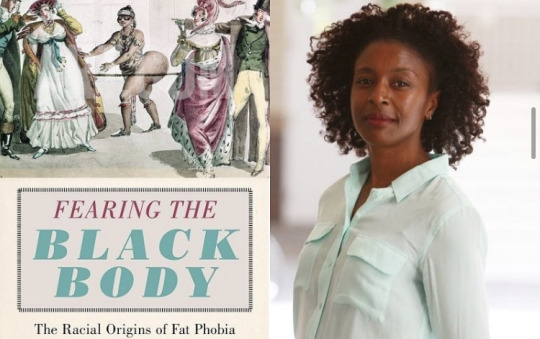
Sabrina Strings is an associate professor of sociology at the University of California, Irvine and the author of Fearing the Black Body: The Racial Origins of Fat Phobia, which exposes fatphobia’s roots in anti-blackness. Strings contributed an opinion story to The New York Times titled “It’s Not Obesity. It’s Slavery.” With Lindo Bacon (creator of HAES), she coauthored “The Racist Roots of Fighting Obesity,” published in Scientific American. Strings has a BA in psychology and an MA and PHd in sociology. This book is #1 on my to-read list!!
https://www.sabrinastrings.com
• Hannah Fuhlendorf (she/her), MA LPCC NCC

Hannah is a highly educated and experienced counselor whose work focuses on self acceptance, eliminating the effects of internalized oppression, and practicing through a HAES lens. She is a fat liberationist who puts out educational videos daily. Hannah is also married to a healthcare professional, and the two of them are working toward making the medical field more accessible to fat people in their local community, and offering education on how to be fat allies. I really admire Hannah and the work that she does!
@ hannahtalksbodies on IG and TikTok
• Tracy Cox (she/her)
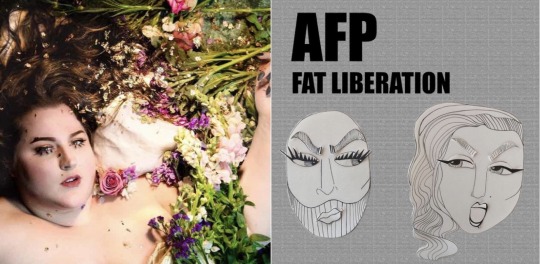
Tracy is an award-winning performer and artist, who co-created the web series “Angry Fat People” with Matthew Anchel, which takes a pop culture approach on serious issues faced by fat performers. She has been interviewed by the New York Times on fat politics and accessibility, and currently has a huge following on IG where she unpacks fat performance, fashion, and politics. You may know her as the creator of the ‘fat vanity’ trend on TikTok!
@ sparklejams on IG & TikTok
• Da’Shaun L. Harrison (they/them)
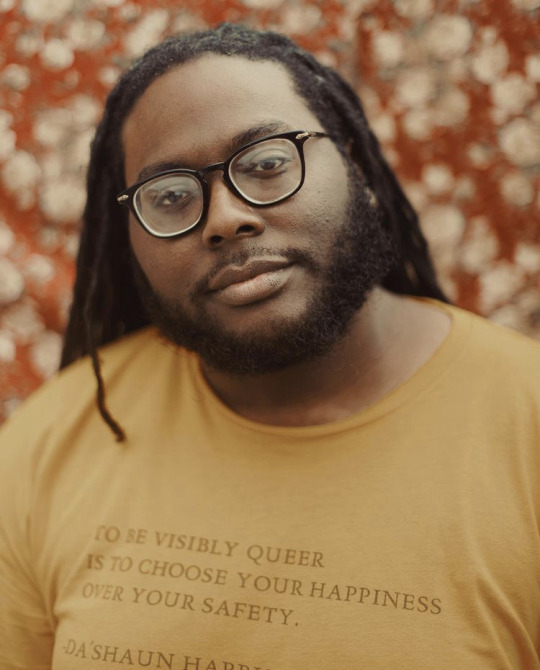
Da’Shaun is a non-binary abolitionist, community organizer, and writer. They are currently a managing editor and columnist at Wear Your Voice Magazine. They travel throughout the United States and abroad to speak at conferences, colleges, and lead workshops focused on Blackness, queerness, gender, class, religion, (dis)abilities, fatness, and the intersection at which they all meet. Da’Shaun is the author of the book Belly of the Beast: The Politics of Anti-Fatness as Anti-Blackness, which is expected to be published in July 2021. They have an incredibly enlightening social media presence as well!!
@ dashaunlh on IG and Twitter
• Lauren Buchness (she/her)
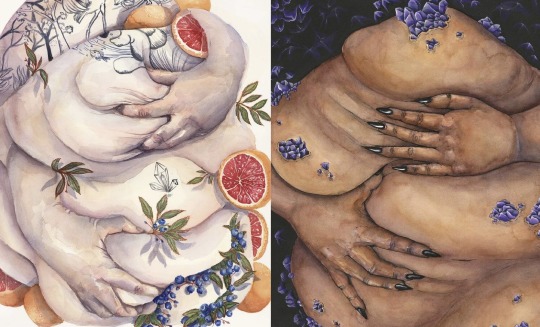
Lauren Buchness is one of my favorite artists. She’s a contemporary artist and fat activist based in Tucson, Arizona. By combining painting & performance, she aims to question Western standards of beauty and create conversations that alter preconceived notions about the fat body. Go check out her gorgeous work!!
@ ladybuchness on IG and TikTok
If you’re interested in learning about diet culture and intuitive eating, check out
Shana Minei Spence (she/her), MS RDN CDN
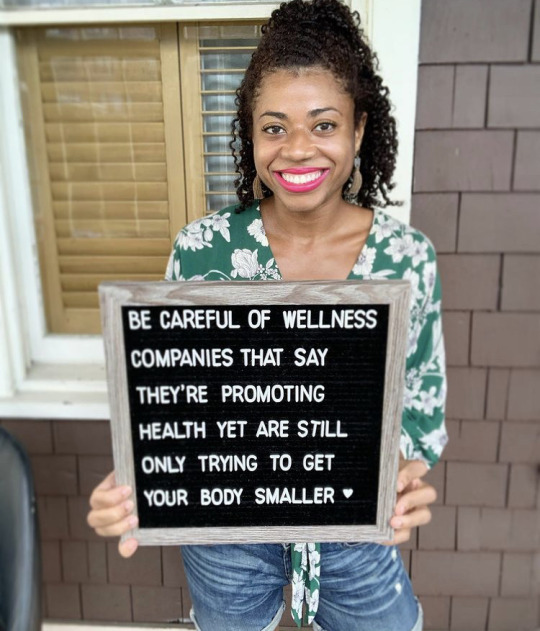
Shana is a Registered Dietitian Nutritionist who opposes food restriction and encourages intuitive eating! She spreads food positive daily messages on her platform. She used to work in fashion, but she left after being dissatisfied with the industry and went back to school to become involved in food policy and public health. She offers counseling on a HAES approach. I have much respect for Shana!
@ thenutritiontea on IG
And right here on tumblr (who was my personal introduction to fat lib) -
@ bigfatscience !!!
An anonymous fat liberationist. They share so many great resources, diving head-first into the scientific research of weight and health, they’ve found that the relation between the two is extremely complex. They tackle the biases of research in a system that profits off of fatphobia, and they offer a fat positive perspective based on scientific studies. Their blog serves as an easily accessible resource for fat folx and fat activists who want to learn about fat positive science to support their own personal interests/activism. Thank you for your work, bigfatscience!! (if you have questions for them, you will have a greater chance of getting a response with anon off!)
• Sonalee Rashatwar (she/they), LCSW MEd
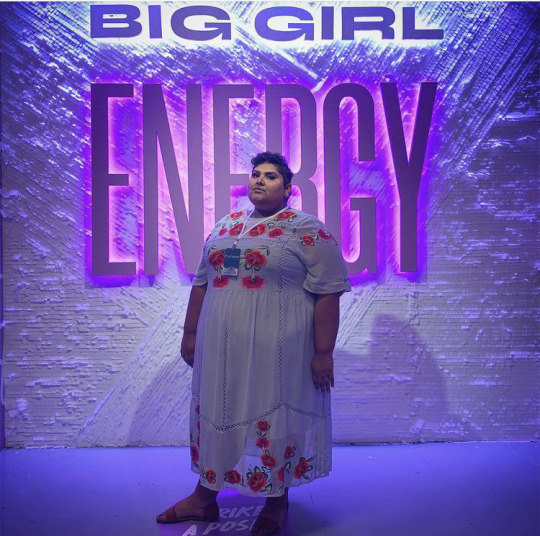
Sonalee is an award-winning clinical social worker, sex therapist, and grassroots organizer. They’re a superfat queer bisexual non-binary therapist and co-owner of Radical Therapy Center. Sonalee is specialized in treating sexual trauma, internalized fatphobia, immigrant kid guilt, and South Asian family systems, while offering fat positive sexual healthcare. Go, Sonalee!!
@ thefatsextherapist on IG
• Fat Rose (org)
Fat Rose organizes fat people, building a more radical fat liberation movement in strong relationship with other social movements, such as anti-fascism, anti-ableism, and anti-racism. Check them out on Facebook!
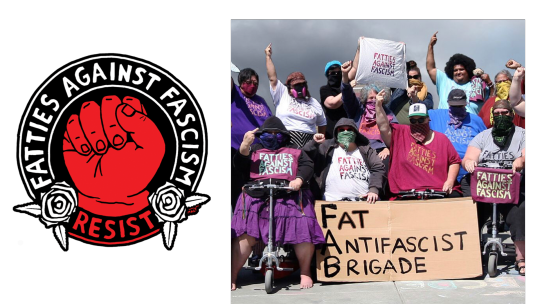
fatrose.org
Honorable IG mentions: (Some anti diet culture specific blogs in here, as well)
@fatangryblackgirl @msgigggles @thefatphobiaslayer @bodyimagewithbri @saucyewest @fatpositivetherapy @fatlippodcast @chairbreaker
BOOKS
And here’s an amazing list of fat-positive book recommendations from HannahTalksBodies!
Science & Health:
Health at Every Size by Lindo Bacon PhD
Body Respect by Lindo Bacon PhD and Lucy Aphramor PhD, RD
Secrets from the Eating Lab by Traci Mann PhD
Anti-Diet by Christy Harrison MPH, RD
Fat Liberation:
Fearing the Black Body by Sabrina Strings PhD
Fat Activism by Dr. Charlotte Cooper
Fat Politics by J. Eric Oliver
The Fat Studies Reader by Esther Rothblum (Editor) and Sondra Solovay (Editor)
Fat Shame by Amy Erdman Farrell
Self Acceptance:
The Body is Not an Apology by Sonya Renee Taylor
Things No One will Tell Fat Girls by Jes Baker
Eating in the Light of the Moon by Anita Johnson PhD
Happy Fat by Sofie Hagan
You have the Right to Remain Fat by Virgie Tovar
Thanks for reading! Please feel free to share this list of resources!
Image descriptions below.
1. [ID: A black and white photo of Bill Fabrey, a straight-sized, balding white man with thick black glasses wearing a suit and tie, standing at a poduim in front of a sign that reads, “NAAFA”. Beside the image is another photo of Fabrey, from his left side.]
2. [ID: A black and white photo of seven fat, female and gender non-conforming members of The Fat Underground, performing a recital.]
3. [ID: The cover of Sabrina Strings’ book, Fearing the Black Body: The Racial Origins of Fat Phobia. On the cover is an illustration of four upper-class white people in fancy colonial period clothing showing shock and disgust at a Black woman’s exposed body. Beside the book cover is a photo of Sabrina Strings, a straight-sized Black woman with dark brown curly hair wearing a blouse.]
4. [ID: Hannah Fulhendorf, a fat, white woman with straight hair dyed blue, wearing a black tank top and holding her shoulder while smiling brightly and looking into the camera.]
5. [ID: An artistic picture of Tracy Cox, a fat, white woman with long, straight brown hair, laying topless on a bed of flowers. There are flower petals placed strategically in her hair on her skin, and along her lower eyelid. Beside that image, is an image of the album cover for Angry Fat People, picturing two angry faces made out of white paper against a grey background. In the top left corner, black, bolded text that reads “AFP” and “FAT LIBERATION”.]
6. [ID: Da’Shaun L. Harrison, a fat, non-binary Black person with a beard, glasses, and long dreadlocks, wearing a shirt that reads, “TO BE VISIBLY QUEER IS TO CHOOSE YOUR HAPPINESS OVER YOUR SAFETY. -DA’SHAUN HARRISON” against a natural backdrop of autumn leaves.]
7. [ID: A watercolor painting by Lauren Buchness of a white and tattooed fat body, hands caressing abstract rolls of fat with wild blueberries and grapefruit between folds. Beside it is another Buchness watercolor painting of Black hands with long sharp nails, caressing the midsection of a fat Black body, with purple crystals growing out of the skin.]
8. [ID: Shana Minei Spence, a straight-sized, Black woman smiling with bright pink lipstick and her long wavy hair pulled back, wearing a floral pattern shirt and jean shorts. She is holding small marquee that reads, “BE CAREFUL OF WELLNESS COMPANIES THAT SAY THEY’RE PROMOTING HEALTH YET ARE STILL ONLY TRYING TO GET YOUR BODY SMALLER” and a heart symbol.]
9. [ID: Sonalee Rashatwar, a superfat, South Asian non-binary person with short black hair, wearing a long floral dress, standing in front of large glowing text that reads, “BIG GIRL ENERGY” against a coarse-textured wall.]
10. [ID: A circular logo with a red fist in the center, with text surrounding it that reads, “FATTIES AGAINST FASCISM” with roses separating the word “RESIST”. Beside it is another image, of eleven fat and superfat activists, standing and sitting on mobility scooters, holding fists and middle fingers in the air, wearing T-shirts and holding banners that both read, “FATTIES AGAINST FASCISM”. In front of the group is a large cardboard sign that spells the acronym “F.A.B.” which stands for “Fat Antifascist Brigade”.]
#fat activists#people#fat liberation#fat activism#fat positivity#resources#anti diet culture#anti-diet#anti-fatphobia#anti-racism#haes#masterpost
2K notes
·
View notes
Link
By
Paula Derrow
Jan 20, 2014
When Kim Berlin fell in love for the first time, she fell hard. "He was the first person I'd been with sexually," says Berlin, who was a college freshman at the time. Maybe it was because she was new to dating, but she admits, "I was crazy, crazy obsessive." For one thing, she had a hard time accepting that her new guy had ever been with anyone else. "I was consumed with his high school girlfriend — a redhead," Berlin recalls. "I literally started following redheads down the street to see what they had that I didn't." It didn't help that her guy seemed to get off on making her jealous. "Once, he casually mentioned that he was 'haunted' by his ex," a remark that left Berlin constantly worried that she would lose him. For a while, he even kept the redhead's photo on his desk. When it disappeared, instead of feeling relieved, Berlin waited until he was out of town, then tore through piles of his boxes until she unearthed the hated image, just so she could stare at it. "The only time I felt at peace was when he was napping next to me in bed," she says.
Ah, obsessive love. Lena Dunham's Hannah felt it for the elusive Adam during the first season of Girls. Anastasia felt it for Fifty Shades' tortured-but-hot Grey. And if you've ever truly been head over heels, you've felt it too: the butterflies before you see your crush, the wrenching anxiety as you wait for his text, the over-the-top elation when you get it, the two hours spent analyzing his message ("What does he mean by 'BRB'?"), the inability to think about anything else.…
While it sounds kind of crazy (and indeed, we wouldn't recommend following strangers down the street if you don't want to get arrested), in some ways this kind of behavior is totally normal. "I would say that if you don't experience some degree of obsessive thinking as a relationship takes hold, you're not truly in love," says Helen Fisher, PhD, a biological anthropologist at Rutgers University, in New Jersey. Blame it on evolution: Once we find someone we believe is right for us, we're literally driven to pursue that person. That's the way the brain is built.
Wired to Obsess
"In the early stages of love, you're pretty much drunk on dopamine — the brain chemical linked with feelings of ecstasy, cravings, even addiction," says Pepper Schwartz, PhD, a professor of sociology at the University of Washington at Seattle and coauthor of The Normal Bar: The Surprising Secrets of Happy Couples. Brain-imaging studies by Fisher and her research team found that when smitten people look at a photo of their beloved, activity sparks up in a tiny area of the midbrain known as the ventral tegmental area, bathing your synapses with druglike waves of feel-good dopamine. "It's the brain's reward system — the purpose is to create wanting, craving, and focused energy," Fisher explains. Scarily, it's the exact same circuit that gets triggered in cocaine addicts. "Once it's activated, it leaves you highly motivated to get what you're after, whether it's drugs or a person," says Fisher. "We've proven that romantic love can be just as powerful as an addiction. I know someone who, after her boyfriend dumped her, took 10 years to get over it. Once we get it into our head that someone would be a good life partner, the brain is very well built to turn a person into a doormat."
Fisher's MRI studies also suggest that when someone is crazy in love, the insular cortex, a brain region associated with anxiety, lights up like a Christmas tree. Which is why, when your crush's texts stop coming ("He said he would BRB!"), you immediately worry that someone has broken into his place and killed him. Or that he's with another girl. Because what else could it be?
Then there's the roiling mix of hormones that make you sexually hungry for the object of your obsession. For Jordan Katz, 25, the chemistry was instantaneous when she met an older media magnate in an L.A. club. His age (35) and success were a potent combination, and she was instantly attracted. "That night, he took me to his place, and I basically stayed there for a week, just the two of us. My friends were freaking out," Katz recalls. That set the tone for their relationship. "He'd pick me up, and we'd go back to his place and have sex," Katz says. "Then he'd leave me in the apartment and go out — he said I looked too young for him to take out in public—and I'd happily cook him dinner. It didn't matter how he treated me. He was all I wanted."
"When you start to feel a little bit in love, your testosterone activity increases and everything about the person becomes sexually attractive," explains Fisher. It also works the other way around: If you fall into bed with a stranger, "hormones are released — oxytocin and vasopressin — that can boost your feelings of attachment," she says. Contrary to urban legend, what matters most in terms of initial sexual attraction isn't the chemicals known as pheromones (in other animals, pheromones are detected by a heightened sense of smell and tend to drive mating behavior). In humans, sexual desire is driven by something Fisher calls the brain's love map: that list of things you subconsciously look for in a mate, whether it's success, accent, body type, or whatever gets you going. Although studies suggest hormones play a role in why we're drawn to certain people (for instance, some research suggests women feel hornier — and are more alluring to men—during ovulation), "desire has more to do with what we're looking for and how that person responds to us than it does any mix of odors or hormones," Schwartz says.
Chemistry aside, this can't-eat-or-sleep phase of love eventually shifts into the I-can-see-his-faults phase. "We still find dopamine-related craving activity in the brains of newlyweds who've been together for several years," says Fisher. "But typically, the hysterical obsession dissipates after a year or so." If it didn't, no one would get anything done. Or we'd all end up dead, like Romeo and Juliet. Not good for the survival of the species.
When Normal Love Turns Crazy
For some people, though, this crazy-making love doesn't dissipate. Instead, it persists even when a guy breaks his promises…or rarely drops by…or accidentally texts a photo of another woman's boobs. What's crazier is that on-again, off-again attention can actually fuel obsessive love, even in an otherwise levelheaded woman.
That's what happened when Steph, 26, met a guy named Jason right before she was about to move to Spain for a long-awaited chance to teach English there. "I fell in love with him instantly. We were inseparable, and we talked about moving in together when I got back," she recalls. Steph even proposed calling off her dream trip. "He was very against that," Steph says, "under the guise of being supportive."
So off she went. "I wrote him love e-mails every day, sent him videos of my life there. No reply." (Or, as they say in Spain, nada.) Yet she didn't doubt his love for a second, not when he started sounding "distant and weird" on the phone…or when he failed to pick up at all. Then during an infrequent call, he dumped her with no explanation. Instead of writing him off as a jerk, Steph got on the next plane home, sobbing through the entire intercontinental flight. "I went straight to his apartment, knocking and sobbing until his brother opened the door. He told me Jason hadn't been into our relationship for a while. That should have been clear to me by then."
This dogged determination is a common result when one partner plays hard to get. "The biggest reason a healthy, normal infatuation fails to mature and instead shifts into an unhealthy obsession is when someone gives you just enough attention and encouragement to fuel your feelings but not enough for you to feel sure of him," says Schwartz. "It's the 'yes, I will; no, I won't' pattern that makes sane people go totally nuts." In other words, when you get only occasional little hits of that love drug, the cravings just get stronger.
Are You the Obsessive Type?
Sometimes, though, a bad case of obsessive love can take hold with virtually no encouragement. "Often, people get 'hooked on the look'—they're attracted to someone because he's hot or a bad boy, and they ignore warning signs that the person might not be right for them…or even interested in them," says psychotherapist John D. Moore, PhD, author of Confusing Love With Obsession. "I met this guy at a college party and slept with him that night," says Ann, a communications strategist in Atlanta. "I refused to be a one-night stand, so I did everything in my power to make it happen again." She got a copy of his class schedule from a friend who worked in the registrar's office, and "I planted my ass in his path for months," she says. "I hung around the language lab even though I didn't take a language class. I cased the bar where he played darts. I walked past his home at least three times a day, a home that was located at the top of a steep hill—in rain, snow, it didn't matter — just to get a glimpse of the guy." Perhaps not surprisingly, her efforts didn't amount to much: "He turned into a one-year stand — the guy I sometimes had sex with."
Most of us have been guilty of committing at least one or two drive-bys or walk-bys, as Moore calls them, not to mention stalking the object of our obsession on Facebook and Instagram. But psychologists believe certain personality types are particularly vulnerable to falling into these all-consuming patterns. People who grew up in homes with alcoholism or who don't have nurturing parents may be prone to forming what experts call anxious or avoidant attachment styles — becoming clingy or pursuing guys who are never quite available. "With an anxious attacher, if a guy doesn't call, she'll assume it's her fault. She doesn't feel whole when she's not with him," explains Arthur Aron, a social psychologist at Stony Brook University, in New York. "Avoidant attachers tend to be happy even when their feelings aren't fully requited, because they get the excitement of the back-and-forth without actual commitment."
Kim Berlin stuck things out with her college beau for four years, partly because of the drama. "We had a very heated sexual relationship, as well as giant screaming fights on the street. We'd break up and get back together. One time, I jumped out of a moving car because I was so pissed at him."
If all this doesn't sound like a very good relationship foundation (never mind life-threatening), it isn't. "When you get overly intense too fast, it's inevitable that what you fear most will happen — the person you love will be scared away," warns Schwartz.
How to Break the Cycle
Not coincidentally, the cure for obsessive love is the same one recommended to any other addict: Gather your support network around you, and drop the obsession cold turkey.
First, though, you have to recognize your own behavior: Do you go from 0 to 60 really quickly? Does a crush become your whole world almost immediately, despite warning signs that he may not be good for you? (If you're not sure, take a look at the checklist at left.) "Once you see your patterns," says Moore, "you have an opportunity to create positive change."
The next step: Quit the object of your obsession — no easing out, no residual sleepovers. An all-or-nothing approach is crucial to breaking the addiction. "Every time you Google him, you're getting a little hit of dopamine, and your cravings only get stronger," says Fisher. De-Friend him, unfollow him, block him, delete his texts from your phone — the whole deal. Then vow not to contact him and that you won't respond if he contacts you.
"It helps to have friends hold you accountable," says Schwartz. "Tell them that you're not allowed to mention his name in their presence, and make them hold you to it." If you can't sleep or get work done or you're miserable for weeks on end, Moore recommends seeing a therapist who specializes in cognitive behavioral therapy. "The goal with CBT is to replace irrational thoughts — that you must be with someone to feel complete — with a healthier view of love," he explains.
For Berlin, her tumultuous relationship ended when she discovered her boyfriend had done the thing she feared most: slept with his redheaded ex. Disgusted, Berlin started hanging out with nicer guys, including a work buddy who was the opposite of the cheater. "Ethan wasn't on my romantic radar at all," she admits. "But I was very much myself with him, and our friendship caught fire." It wasn't dramatic. There were no screaming fights or leaps from moving vehicles. "I wasn't afraid of losing him — and I fell for that sense of comfort and intimacy," Berlin says. So much so, that after dating for a year and a half, the two got married. "In every other relationship, I never fully felt that I had the person," she says. "But with Ethan, things felt solid, stable, and true. I never recognized that as love before, but now I know it's the real deal."
1 note
·
View note